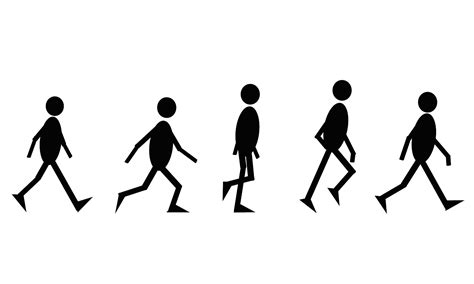Walk Animation Techniques

Walking, one of the most fundamental human movements, is also a crucial aspect of character animation in various mediums, including film, video games, and simulations. The walk animation technique is a cornerstone of character animation, requiring a deep understanding of both the technical and artistic aspects of movement. Achieving a believable and engaging walk cycle involves a blend of observational skills, anatomical knowledge, and mastery over the chosen animation tool or software.
The foundation of walk animation lies in the observation of real-world movements. Animators study how humans walk, focusing on the patterns of movement, the distribution of weight, and the dynamics of the body's parts. This includes understanding the role of the spine, the movement of the arms, and the way the legs and feet interact with the ground. The walk cycle, which typically includes the stages of heel strike, toe-off, and mid-stance, among others, is crucial for creating a natural and convincing animation.
Key Points
- The walk cycle consists of several key stages, including heel strike, weight transfer, and push-off, each critical for a natural appearance.
- Understanding human anatomy and the principles of physics is essential for creating realistic walk animations.
- Observation and reference gathering from real-world movements are vital for achieving authenticity.
- Technical skills in animation software, such as Blender or Autodesk Maya, are necessary for executing the walk animation.
- Feedback and iteration are key components of the animation process, allowing for refinement and improvement of the walk cycle.
Principles of Walk Animation

Walk animation is governed by several key principles, including squash and stretch, anticipation, staging, straight ahead action and pose to pose, follow through and overlapping action, slow in and slow out, arcs, secondary action, timing, and exaggeration. Each of these principles contributes to creating a walk cycle that is not only believable but also engaging and full of character. For instance, the principle of squash and stretch allows animators to convey the flexibility and weight of characters, while anticipation and staging help in guiding the audience’s attention and enhancing the performance.
Technical Considerations
From a technical standpoint, walk animation involves a deep understanding of the animation software or tool being used. This includes knowledge of keyframe animation, where specific points in time are defined to create the illusion of movement, and tweening, which is the process of generating intermediate frames between keyframes. Additionally, understanding how to manipulate the character rig, which is the digital skeleton of a 3D character, is crucial for achieving the desired movements and poses.
| Animation Principle | Description |
|---|---|
| Squash and Stretch | The ability of characters to change shape in response to external forces, conveying a sense of flexibility and weight. |
| Anticipation | A small action that precedes a major one, preparing the audience for what is to come and adding a sense of realism to the movement. |
| Staging | The presentation and orientation of the action to the audience, guiding their attention and enhancing the performance. |

Applications and Variations

Walk animation is not a one-size-fits-all technique. Depending on the character, the context, and the desired mood or effect, walk cycles can vary significantly. For example, a cartoon character’s walk might be more exaggerated and comical, while a realistic video game character’s walk would aim for authenticity and realism. Additionally, factors such as age, gender, mood, and even the surface on which the character is walking can influence the walk animation, making each cycle unique and challenging to create.
Evolution and Trends
The field of walk animation is continuously evolving, influenced by advancements in technology, changes in viewer preferences, and the creativity of animators. The use of motion capture technology, for instance, has become more prevalent, allowing for highly realistic movements to be captured and translated into digital characters. However, even with these advancements, the fundamental principles of walk animation remain the same, requiring animators to balance technical skill with artistic vision and a deep understanding of human movement.
What makes a walk animation believable?
+A believable walk animation is one that accurately captures the nuances of human movement, including the natural sway of the arms, the bounce of the body, and the way the feet interact with the ground. It also involves a deep understanding of timing and spacing, as well as an adherence to the principles of animation.
How does one create a unique walk cycle for a character?
+Creating a unique walk cycle involves observing and referencing the specific characteristics of the character, such as their age, mood, and personality traits, and then translating these into movement. It's about capturing the essence and personality of the character in their walk, making it distinct and recognizable.
What role does technology play in walk animation?
+Technology, such as animation software and motion capture systems, plays a significant role in walk animation by providing the tools necessary to create, refine, and perfect the walk cycle. It allows for precision, efficiency, and the ability to achieve high levels of realism and detail that would be difficult or impossible to accomplish by hand.
In conclusion, walk animation is a complex and multifaceted aspect of character animation, requiring a blend of technical skill, artistic vision, and a deep understanding of human movement. By mastering the principles of animation, staying updated with the latest technologies, and continually observing and learning from the world around them, animators can create walk cycles that are not only believable but also engaging and full of character, bringing their creations to life in a way that captivates and resonates with audiences.